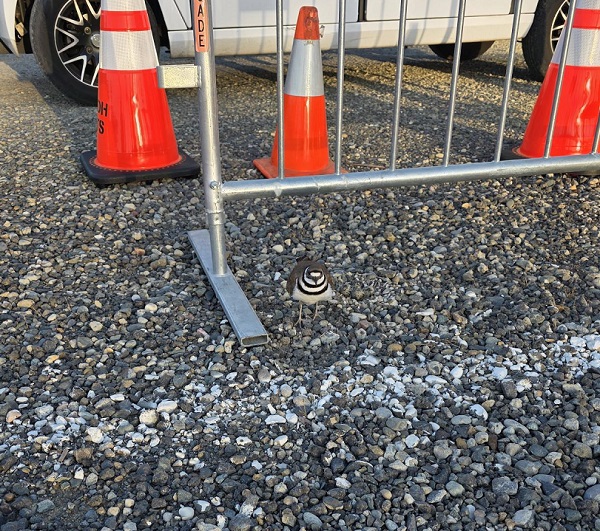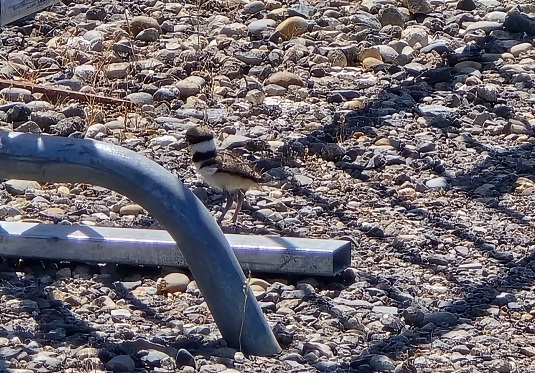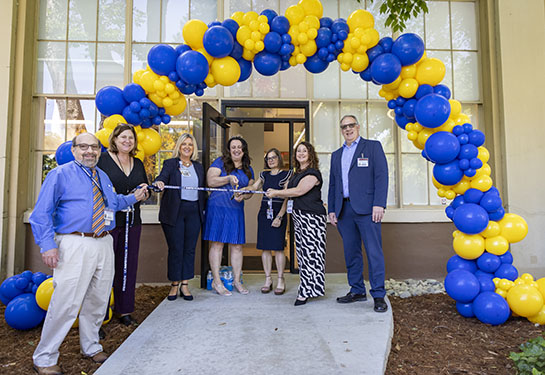New pictures: Killdeer chicks hatch over the weekend
Parking services keeping an eye on Ella and her chicks
Valarie Pitts, associate director of parking, has confirmed that Ella the killdeer's chicks hatched over the weekend and are being closely watched by both parents. Crows are in the area too and both parents are doing their best to keep their chicks safe.
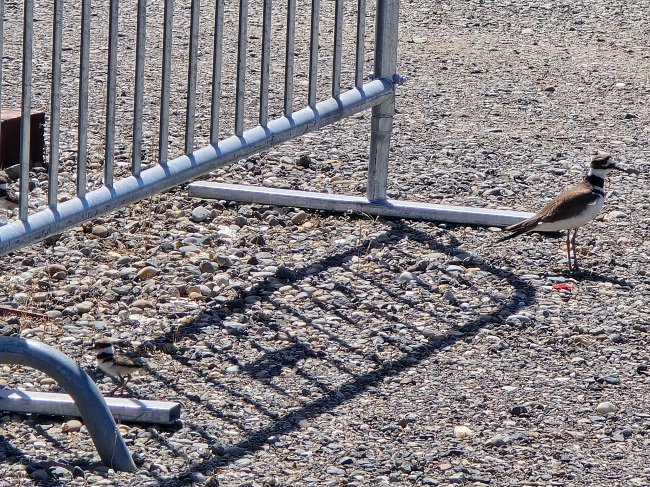

Post from April 17, 2025
Ella, the brave killdeer who has chosen Parking Lot 30 near Aggie Square at UC Davis Health as her nesting spot, is doing well. She and her partner continue to trade time guarding and sitting on their nest containing four speckled eggs.
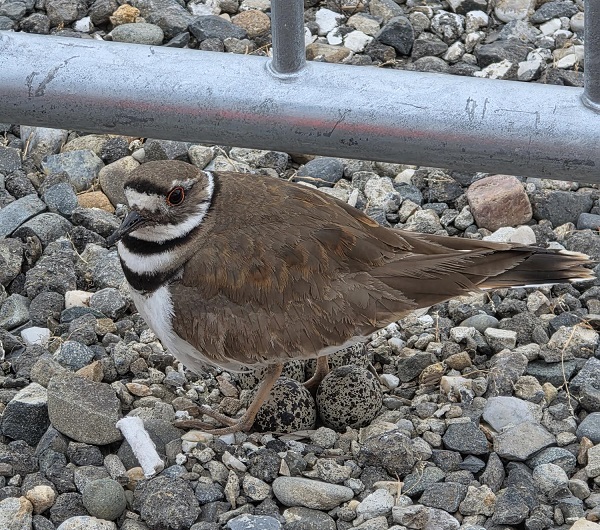
Valarie Pitts, associate director of parking, checks on Ella and the eggs daily and says they are thriving. Bright orange cones circling the nest provide extra protection from parking lot traffic.
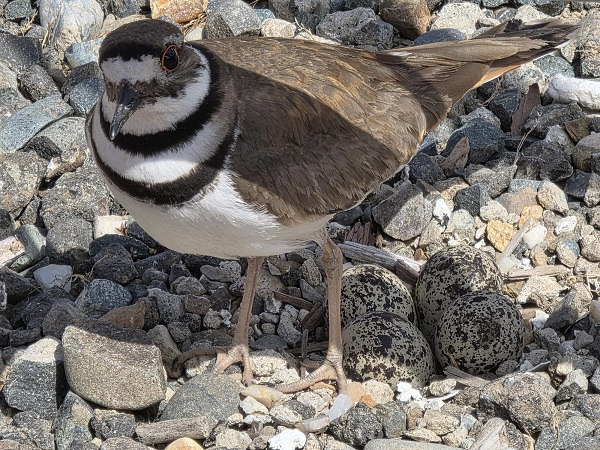
A big thank you to everyone for respecting their space as the proud parents prepare to welcome their chicks into the world.
April 4, 2025: First post about Ella the killdeer
Not to be outdone by the popular peregrine falcons nesting atop the UC Davis Medical Center, a killdeer, a type of plover, has chosen Parking Lot 30 near Aggie Square as the perfect spot for her home.
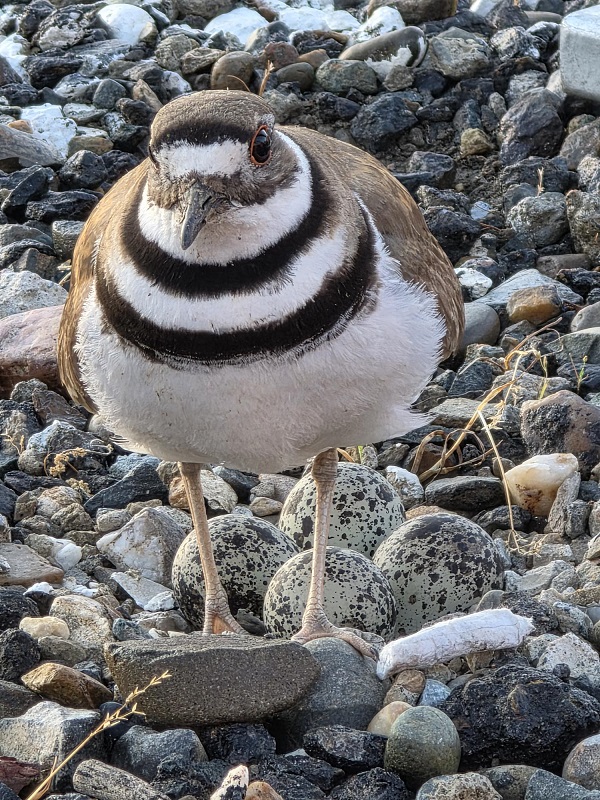
Parking and Transportation team members have lovingly named her Ella. She is a brave killdeer who has made her nest right near the white lines of a parking space.
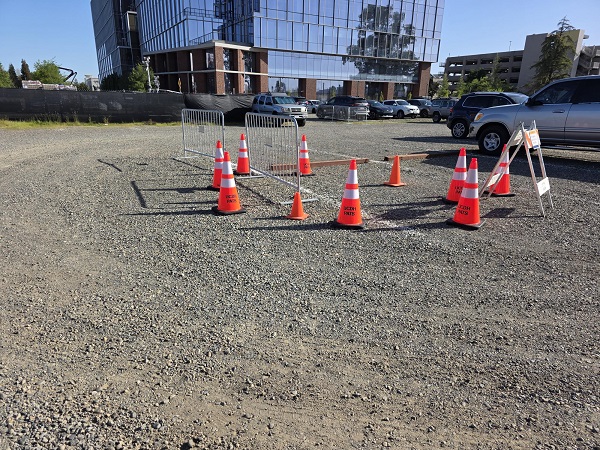
Employees set out bright orange cones around the nest last week to protect the brood when they were spotted. This thoughtful gesture has helped protect Ella and her future chicks from accidental harm.
The killdeer nest contains four speckled eggs, and Ella has diligently protected them amidst the parking lot's daily activity. Her choice of location might seem unusual, but it offers warmth and relative safety from ground predators. Ella's brown and white plumage blends seamlessly with the gravel and asphalt, making her nest almost invisible to the untrained eye.
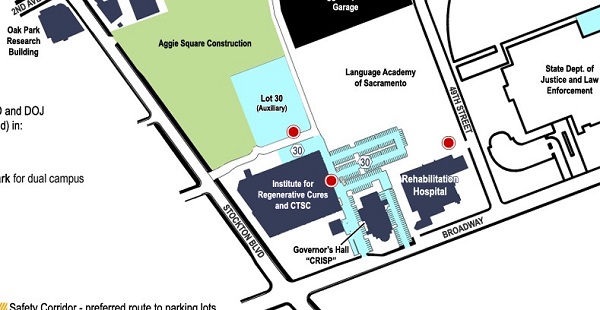
Ella occasionally performs her famous "broken-wing" act to lure potential threats away from her nest, showcasing her clever instincts.
Ella and her eggs symbolize resilience and community spirit at UC Davis Health. We encourage everyone to continue respecting their space and celebrating this remarkable example of life thriving in unexpected places.
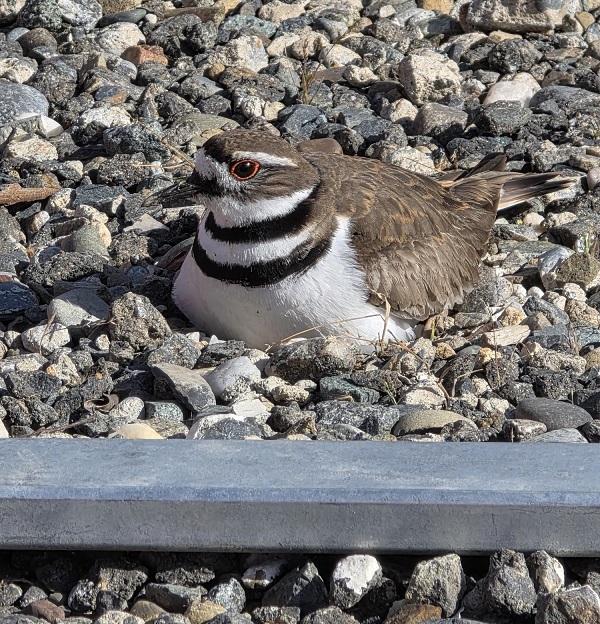
Thank you for helping make our campus a safe and welcoming environment for all creatures. If you were wondering, Parking and Transportation has granted Ella a free parking pass for the season.
About Killdeer from the National Audubon Society
- Why is a killdeer called a killdeer?
- Killdeer get their name from their shrill, piercing call which sounds like “kill-deer.”
- Do killdeer leave their nests unattended?
- While killdeer parents may briefly leave their nests, they rarely leave their eggs unattended for extended periods. Both parents take turns incubating the eggs. Killdeer parents may leave the nest briefly, but they generally return quickly.
- Do both parents incubate the eggs?
- Both male and female killdeer incubate the eggs and care for the young.
- Do killdeer typically build their nests on the ground?
- Killdeer build their nests on the ground, making it crucial to keep the eggs warm and protected. One parent typically seeks food while the other incubates, and when a predator approaches, the parent at the nest distracts it by displaying a broken wing and repeatedly crying, "Kill-deer!"
- Is the ground too hot for chicks?
- On hot days, the attending bird may stand over the nest, shading the eggs with its body while allowing cooling breezes to circulate.
- How long do the chicks stay in the nest after they hatch?
- Killdeer chicks hatch with a full coat of down feathers and can walk out of the nest as soon as their feathers dry. They still need their parents' protection and guidance for about a month until they fledge.
- Is it illegal to move a killdeer nest?
- Although killdeer are not endangered, they are protected by the Migratory Bird Treaty Act (MBTA) in the United States. To move the nest would require the federal government's permission.
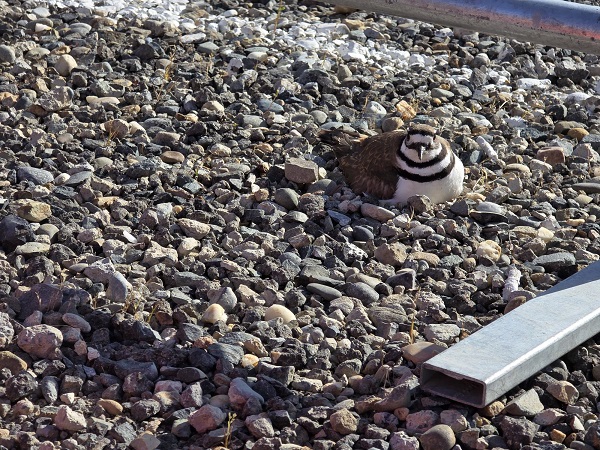
Can you spot Ella's eggs in this new picture taken on April 9, 2025?
